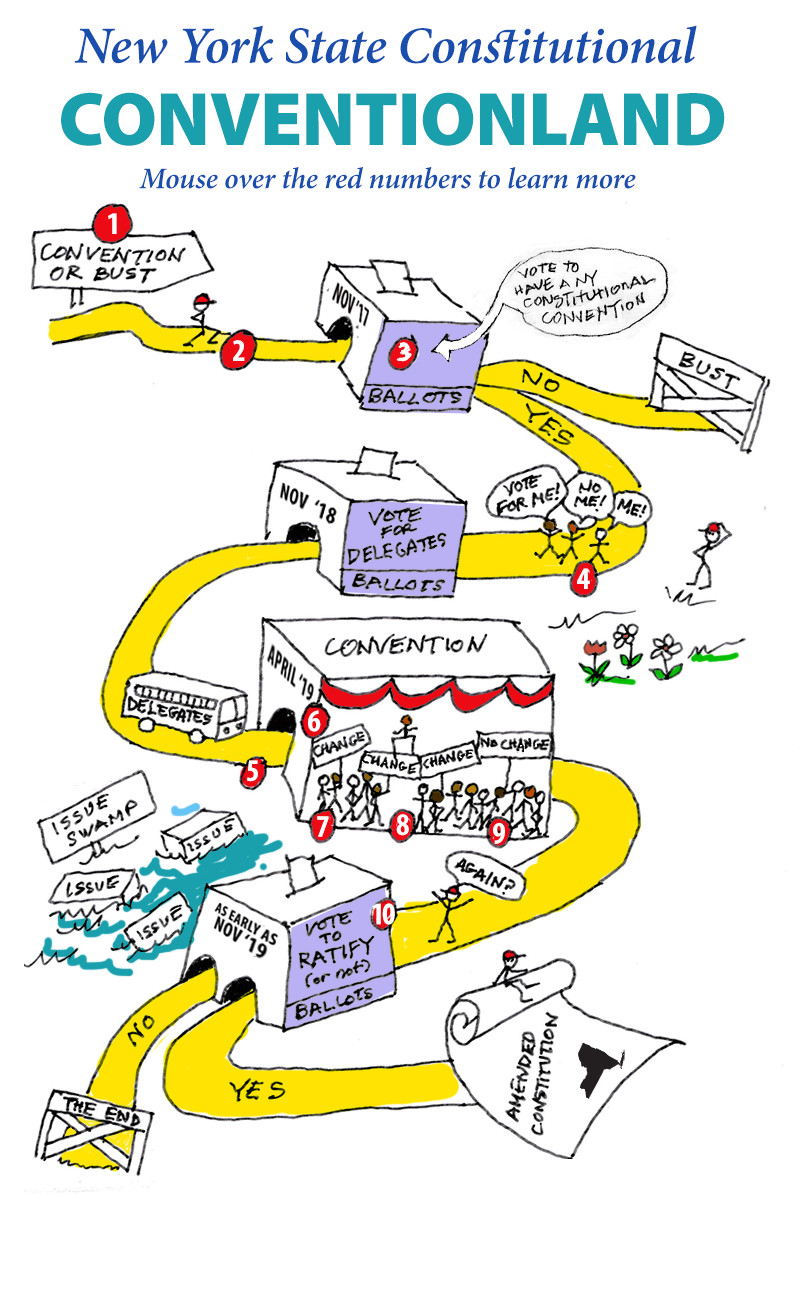New York Constitutional Convention
Under New York’s constitution, every twenty years voters get an opportunity to decide if they wish to overhaul — or tinker with — their state constitution. The below "roadmap" offers a basic view on how that process works. You can hover your cursor over each number to get more detail on each of the "stops" along the way to "Conventionland."

In addition to getting more information by clicking on numbers on the game board, please take a look at our short Guide to the New York State Convention Process.
We offer this a an educational service to all New Yorkers.



 MENU
MENU